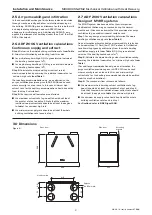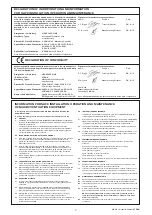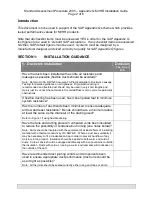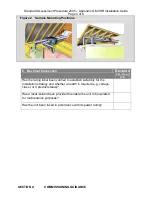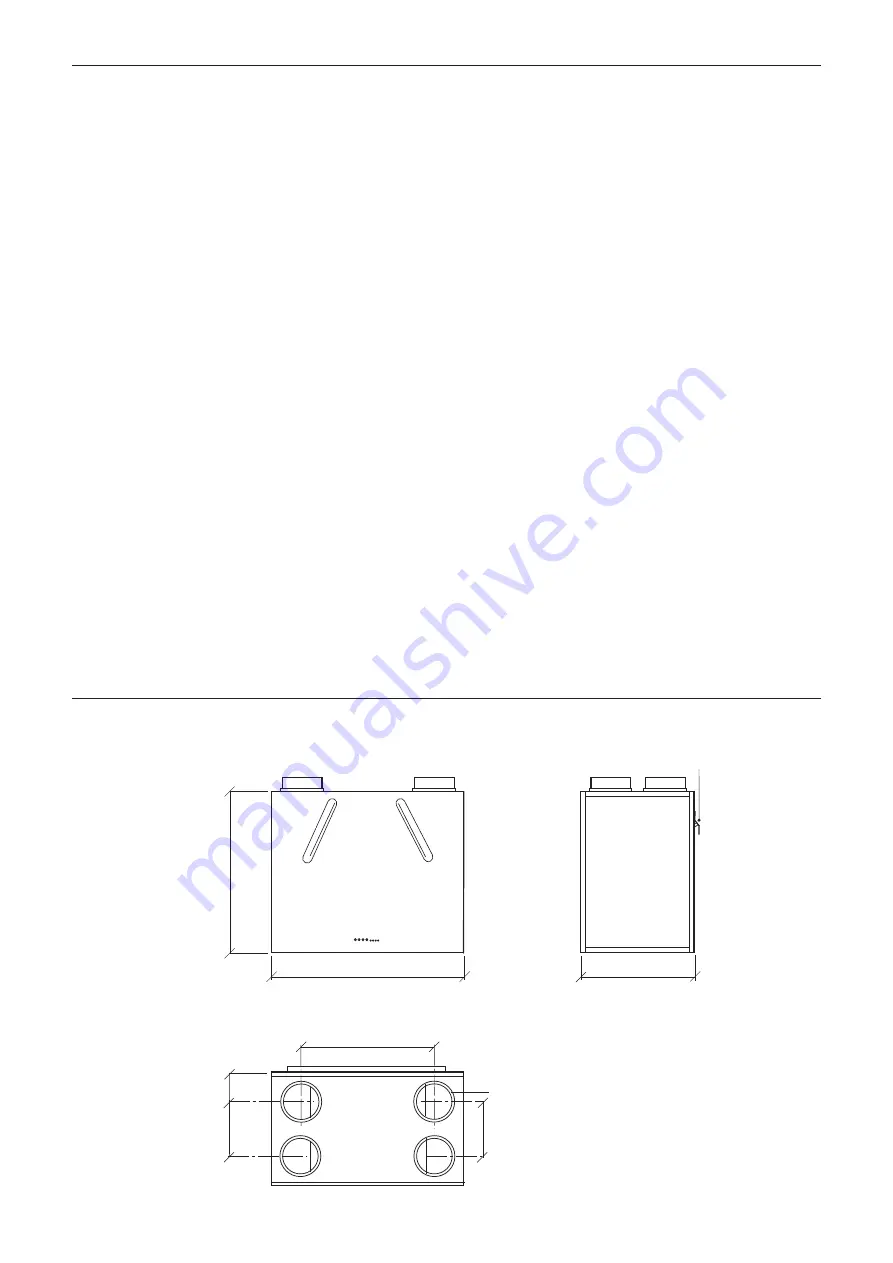
3
08. 05. 14. Leaflet Number 671588
Installation and Maintenance
MRXBOX95-WM2 Mechanical Ventilation with Heat Recovery
603
503
Mounting
bracket
353
Side view
Front view
View from top
Spigots
4 x 125mm dia.
419
90
172
172
3.0 Dimensions
Figure 6.
2.5 Air permeability and infiltration
Is the uncontrolled exchange of air between inside and outside
through cracks, porosity and other unintentional openings in
the building. ADF2006 gives an allowance for this in both multi
and single storey buildings, however ADF2010 has an
allowance for multi storey only. Additionally ADF2010 only
applies this allowance for dwellings leaker than 5 m
3
/(h.m
2
) at
50Pa. (See below).
2.6 ADF 2006 Ventilation calculations
Continuous supply and extract
Step 1:
Determine the whole building ventilation rate
from Table
2.
Allow for infiltration by subtracting from this value:
n
for multi-storey dwellings: 0.04 x gross internal volume of
the dwelling heated space (m
3
);
n
for single-storey dwellings: 0.06 x gross internal volume of
the dwelling heated space (m
3
).
Step 2:
Calculate the whole dwelling air extract rate at
maximum operation by summing the individual room rates for
‘minimum high rate’
from Table 1.
(For sanitary accommmodation only, as an alternative, the
purge ventilation provisions given in ADF 2006 can be used
where security is not an issue. In this case ‘minimum high
extract rate’ for the sanitary accommodation should be omitted
from the step 2 calculation).
Step 3:
The required airflow rates are as follows:
n
the maximum extract rate (e.g. boost) should be at least
the greater of step 1 and step 2. Note that the maximum
individual room extract rate should be at least those given
in table 1
. for minimum high rate.
n
the minimum air supply rate should be at least the whole
building ventilation rate found in step 1.
2.7 ADF 2010 Ventilation calculations
Design of MVHR systems
The MVHR system has been sized for the winter period.
Additional ventilation may be required during the warmer
months and it has been assumed that the provisions for purge
ventilation (e.g. openable windows) could be used.
Step 1:
For any design air permeability, determine the whole
dwelling ventilation supply rate
from Table 2.
As an alternative where the design air permeability is intended
to be leakier than (>) 5m
3
/(h.m
2
) 50 Pa, allow for infiltration
for all dwelling types by subtracting from the whole dwelling
ventilation supply rate
from Table 2
; 0.04 x gross internal
volume of the dwelling heated space (m
3
).
Step 2:
Calculate the whole dwelling extract ventilation rate by
summing the individual room rates for ‘minimum high rate’
from
Table 1.
(For sanitary accommmodation only, as an alternative, the
purge ventilation provisions given in ADF 2010 can be used
where security is not an issue. In this case ‘minimum high
extract rate’ for the sanitary accommodation should be omitted
from the step 2 calculation).
Step 3:
The required airflow rates are as follows:
n
the maximum whole dwelling extract ventilation rate (e.g.
boost) should be at least the greater of step 1 and step 2.
Note that the maximum individual room extract rate should
be at least those given
in table 1.
for minimum high rate.
n
the minimum air supply rate should be at least the whole
building ventilation rate found in step 1.
For Scotland refer to BRE Digest 398.



